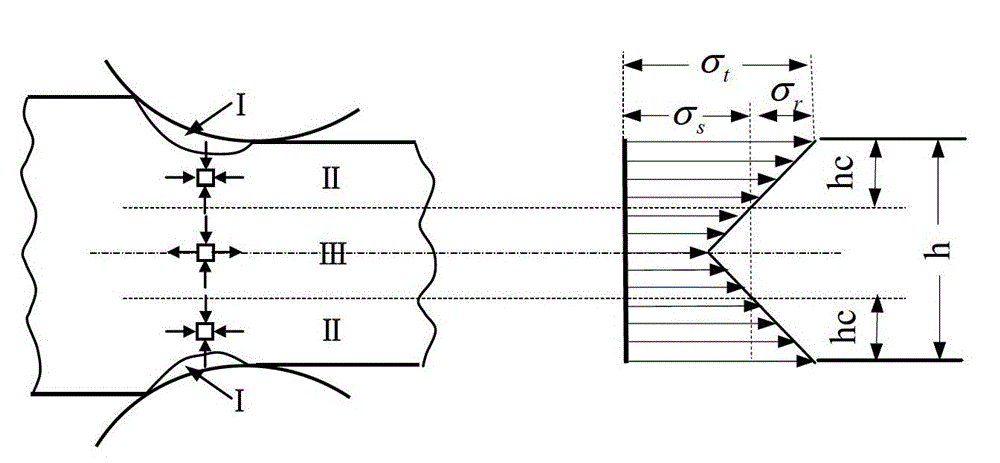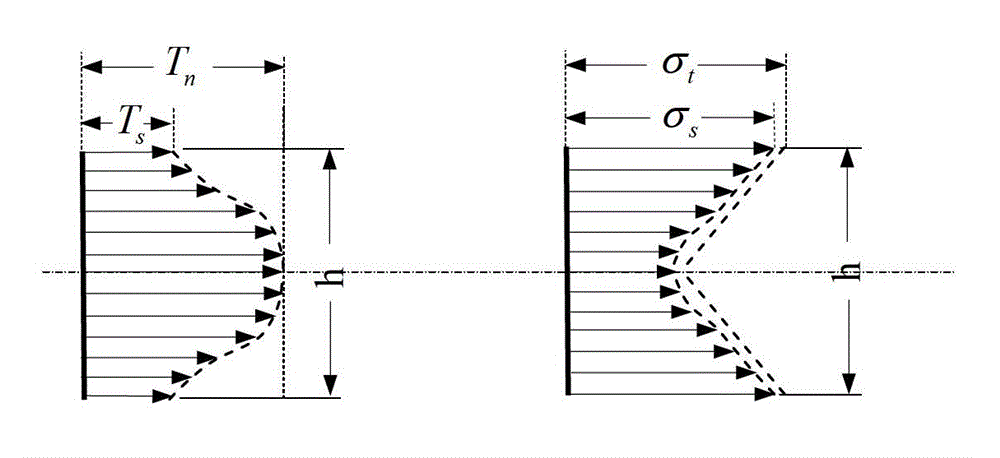A kind of manufacturing method of special thick plate
A manufacturing method and technology for extra-thick plates, applied in temperature control, metal rolling, etc., can solve the problems of no deformation or deformation in the central area, deterioration of the stress state in the central area, and reduction in the yield of blanks, etc. Effects of porosity level, lower center porosity, and reduced edge trimming
- Summary
- Abstract
- Description
- Claims
- Application Information
AI Technical Summary
Problems solved by technology
Method used
Image
Examples
Embodiment 1
[0035] The Q345 continuous casting slab with a thickness of 150mm is used, and the thickness of the rolled product is 60mm. After the continuous casting billet is heated to 1180°C, after descaling by high-pressure water, it enters the forced cooling zone for cooling. The forced cooling method is air mist cooling, and the cooling rate on the billet surface is 10°C / s; the continuous casting with a thickness of 150mm is cooled once. When leaving the cooling zone, the surface temperature of the billet is about 600°C, and then the billet is air-cooled and returned to the temperature to raise the surface to 780-820°C, and then it is quickly sent to the rolling mill for rolling, and the reduction in each pass is 22-30mm. After 3 passes, the surface temperature of the steel plate is still lower than 880°C, and the billet is rolled to form an extra-thick plate with a thickness of 60 mm. Afterwards, it is cooled by the accelerated cooling device after rolling, and then it is stacked for...
Embodiment 2
[0037] The continuous casting Q460 billet with a thickness of 300mm is used, and the thickness of the rolled product is 120mm. After the continuous casting slab is heated to 1200°C, after being descaled by high-pressure water, it enters the forced cooling zone for cooling. Once cooled, the surface temperature of the billet is about 570°C when it leaves the cooling zone, and then the billet is air-cooled and returned to make the surface rise to 820°C-850°C, and then it is quickly sent to the rolling mill for rolling, and the reduction in each pass is 22 ~30mm, after 4 passes of rolling, the thickness of the intermediate billet is 200mm; the surface temperature of the steel plate is slightly higher than 880°C; at this time, the intermediate billet is cooled for the second time, and the billet surface temperature is about 570°C when it exits the cooling zone, after that The intermediate billet is air-cooled and returned to 800°C-830°C, and then immediately sent to the rolling mil...
Embodiment 3
[0039] 600mm thick welded composite billet, rolled finished product thickness 200mm. After the continuous casting slab is heated to 1200°C, it is descaled by high-pressure water after it comes out of the furnace, and then rolled directly. After rolling to a thickness of 400mm, it enters the forced cooling zone for cooling. The forced cooling method is water spray cooling. The cooling rate is 80°C / s; the continuous casting with a thickness of 400mm is cooled for the first time, and the surface temperature of the billet is about 570°C when it exits the cooling zone, and then the billet is air-cooled and returned to the temperature to raise the surface to 880±15°C, and then Quickly sent to the rolling mill for rolling, the reduction of each pass is 25-35mm, after rolling for 3 passes, the thickness of the intermediate billet is 300mm; the surface temperature of the steel plate is higher than 900°C; at this time, the intermediate billet is cooled for the second time , the surface ...
PUM
| Property | Measurement | Unit |
|---|---|---|
| thickness | aaaaa | aaaaa |
| thickness | aaaaa | aaaaa |
| yield strength | aaaaa | aaaaa |
Abstract
Description
Claims
Application Information
 Login to View More
Login to View More - R&D
- Intellectual Property
- Life Sciences
- Materials
- Tech Scout
- Unparalleled Data Quality
- Higher Quality Content
- 60% Fewer Hallucinations
Browse by: Latest US Patents, China's latest patents, Technical Efficacy Thesaurus, Application Domain, Technology Topic, Popular Technical Reports.
© 2025 PatSnap. All rights reserved.Legal|Privacy policy|Modern Slavery Act Transparency Statement|Sitemap|About US| Contact US: help@patsnap.com



